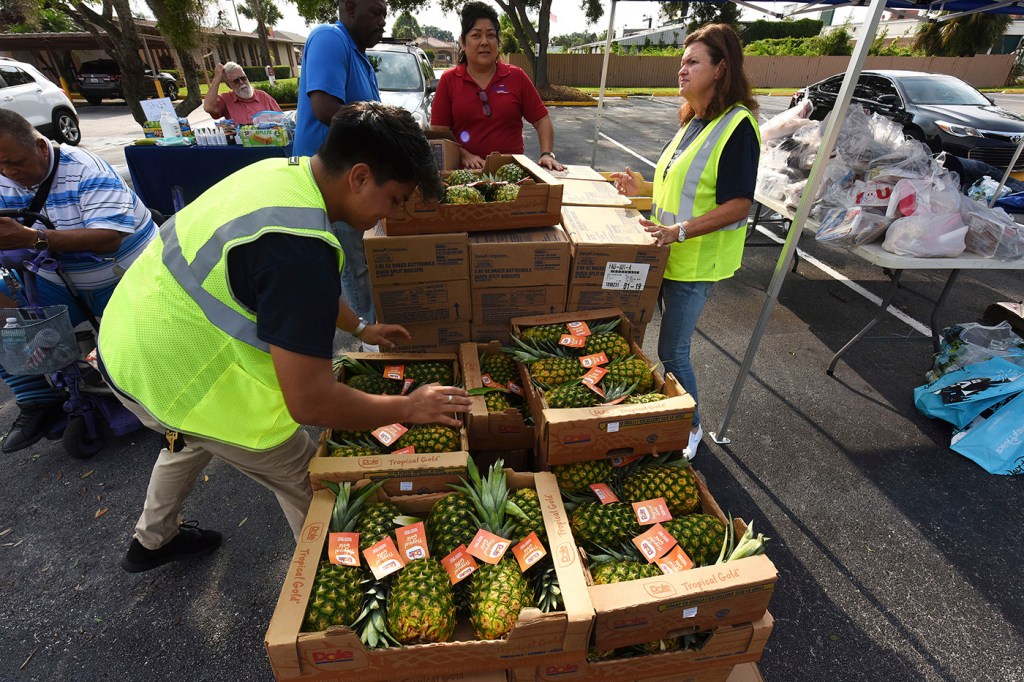Are charitable food donations a double-edged sword? Donations reduce food waste, but also increase food prices

Donating to food pantries does wonders for the public image of grocery store chains.
As it turns out, food donation is also great for the stores’ bottom line—but can result in higher food costs for customers.
Northeastern business professor John Lowrey recently published a paper stating that donation of perishables improves stores’ profitability by making room for more appealing—and higher priced products—and drawing discerning rather than price-conscious shoppers.
“If I’m replacing low-quality goods and only having fresh, high-quality, high-priced products, the markup will be higher on average,” he says.
Food donation is big business, and the more than 200 Feeding America member Food Banks across the US are reliant on retailers for their donations, Lowrey says.
“Just over 30% of the total food supply for food banks comes from retailers, with a lion’s share from hypermarkets like Costco, Walmart and Sam’s Club,” he says.
“Smaller format stores with a commitment to reduce food waste such as Kroger, are also responsible for a large share of food that ends up on the shelves’ of food banks and food pantries.”
Lowrey started on this project six year ago when he saw the opportunity for food retailers to be a force for good in the community. Yet, he says, “The question remained, ‘Why do retailer donate food?’

Historically, the perception has been that grocery stores make donations to court community goodwill, reduce the cost of disposing of food in the trash and reap the benefits of tax deductions, he says.
Retail food corporation also operate on slim margins, meaning that their profits are a small fraction of revenue, so cost-savings’ strategies are popular, says Lowrey, a supply chain expert and assistant professor in the D’Amore-McKim School of Business and Bouvé College of Health Sciences.
However, he suspected that there was more it, since over 17,000 unique stores in the US donate the equivalent $3 billion worth of food per year.
“There had to be some other explanation for sustained, high-volume donations to food banks,” Lowrey says.
In their recently published paper, Lowrey and his two co-authors discovered that perishable food donations, across categories including bakery, dairy, deli, meat and produce, are removed from shelf just past their prime, which creates space on the grocery store shelves for more appealing products that can be sold at a higher prices.
“In a simulation exercise, we estimate that if a donating store increased their donation volumes by 50%, it could have a 9% impact on profit,” Lowrey says.
The issue comes down to the best way to handle perishables that have lost their freshness, such as a banana that has developed brown spots, he says.
One option for the store is to put it on sale at a lower price. There are several drawbacks with that situation, Lowrey says.
The store has to maintain room for it on a bin or shelf while reducing the profit margin of a potential sale. And if the banana doesn’t sell, the store has to pay for it to be hauled away in the rubbish.
Feeding America solves the problem by picking up the would-be sale items in refrigerated trucks for food banks such as the Greater Boston Food Bank, Lowrey says.
“Pricing within the store is actually a very challenging problem. One solution is just to remove low quality goods,” he says. “I just want to remove it from the shelf altogether and donate it at zero direct financial cost to me as the retailer.”
In return, that draws customers seeking a high quality, fresh product and discourages the more price conscious customers looking for sale items, Lowrey says.
Over time, the practice builds the perception that the store offers quality items, he says.
“Retailers live and breathe on their quality perception. If I’m going to Kroger expecting a deal, expecting a promotion, Kroger has already lost. They want me to associate fresh, high-quality goods with their brand.”
The donation system also benefits the environment by cutting down on food waste, Lowrey says. He says that Feeding America has a direct to pantry program that also cuts down on transportation costs by having donations delivered from local stores directly to pantries under its umbrella.
“When it comes to retail food donations and food banking, there seems to be a lot to it,” Lowrey says, “and we’re just beginning to scratch the surface.”
Cynthia McCormick Hibbert is a Northeastern Global News reporter. Email her at c.hibbert@northeastern.edu or contact her on Twitter @HibbertCynthia






